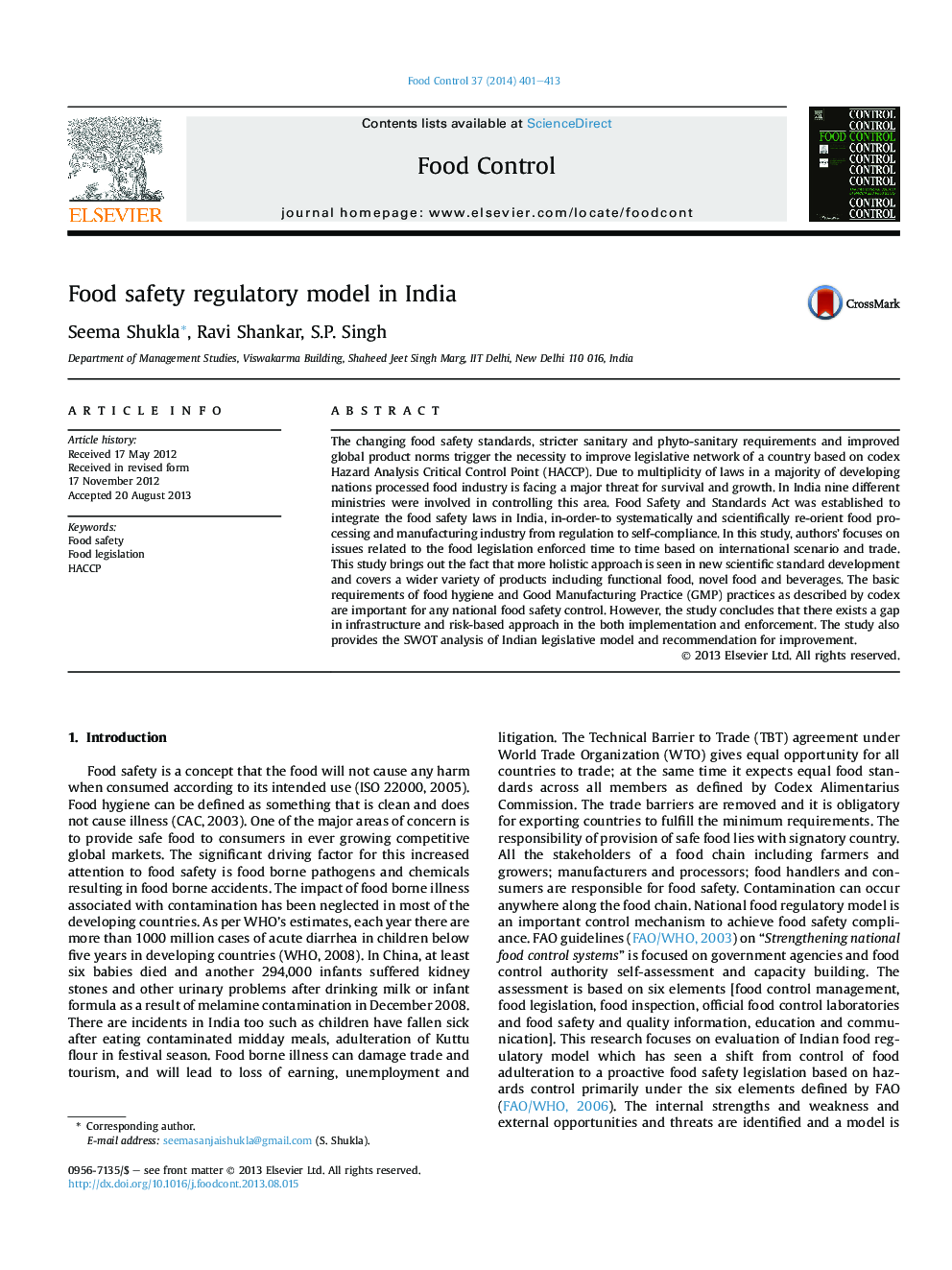| Article ID | Journal | Published Year | Pages | File Type |
|---|---|---|---|---|
| 6392272 | Food Control | 2014 | 13 Pages |
â¢Study of Indian Food regulation viz a viz FAO guideline.â¢SWOT Analysis of Indian food regulatory system.â¢Proposed recommendation for Risk Analysis framework (implementation & enforcement).â¢Other recommendation includes collaboration with stakeholders, use of data and technology.â¢Need for development of reporting, sampling, regular updating and emergency response.
The changing food safety standards, stricter sanitary and phyto-sanitary requirements and improved global product norms trigger the necessity to improve legislative network of a country based on codex Hazard Analysis Critical Control Point (HACCP). Due to multiplicity of laws in a majority of developing nations processed food industry is facing a major threat for survival and growth. In India nine different ministries were involved in controlling this area. Food Safety and Standards Act was established to integrate the food safety laws in India, in-order-to systematically and scientifically re-orient food processing and manufacturing industry from regulation to self-compliance. In this study, authors' focuses on issues related to the food legislation enforced time to time based on international scenario and trade. This study brings out the fact that more holistic approach is seen in new scientific standard development and covers a wider variety of products including functional food, novel food and beverages. The basic requirements of food hygiene and Good Manufacturing Practice (GMP) practices as described by codex are important for any national food safety control. However, the study concludes that there exists a gap in infrastructure and risk-based approach in the both implementation and enforcement. The study also provides the SWOT analysis of Indian legislative model and recommendation for improvement.
